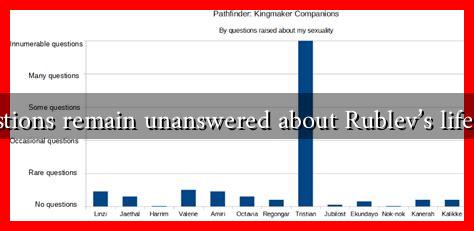-
Table of Contents
What Questions Remain Unanswered About Rublev’s Life and Work?
Andrei Rublev, a 15th-century Russian icon painter, is celebrated as one of the most significant figures in the history of Russian art. His works, particularly the “Trinity” icon, are revered for their spiritual depth and artistic mastery. However, despite his prominence, many aspects of Rublev’s life and work remain shrouded in mystery. This article explores the unanswered questions surrounding Rublev, shedding light on the complexities of his legacy.
The Enigma of Rublev’s Biography
One of the most pressing questions about Rublev is the scarcity of biographical information. Historical records from the 15th century are limited, leading to several unanswered questions:
- What was Rublev’s early life like? The details of his upbringing, education, and early influences are largely unknown.
- Who were his mentors? While it is known that he was part of a monastic community, the identities of his teachers and their impact on his style remain unclear.
- What were his personal beliefs? Rublev’s spiritual convictions are often inferred from his work, but concrete evidence of his personal faith is lacking.
These gaps in knowledge make it challenging to fully understand the context in which Rublev created his masterpieces.
. Scholars continue to debate the implications of this lack of information on our interpretation of his work.
Artistic Influences and Techniques
Rublev’s artistic style is characterized by its ethereal quality and emotional depth. However, several questions linger regarding his influences and techniques:
- What were Rublev’s sources of inspiration? While Byzantine art and earlier Russian iconography are evident in his work, the specific influences that shaped his unique style are still debated.
- How did he develop his techniques? The methods Rublev employed in his painting, such as layering and color choices, are not well-documented, leaving art historians to speculate.
- What role did the socio-political climate play in his work? Understanding how the tumultuous period of the 15th century in Russia influenced his art is crucial but remains largely unexplored.
These questions highlight the need for further research into the artistic milieu of Rublev’s time, which could provide insights into his creative process.
The Interpretation of Rublev’s Iconography
Rublev’s icons are rich in symbolism and theological significance, yet many aspects of their interpretation are still debated:
- What do the symbols in his works represent? While some symbols are widely understood, others remain ambiguous, leading to various interpretations.
- How did Rublev’s work reflect the theological debates of his time? The relationship between his art and the religious controversies of the 15th century is an area ripe for exploration.
- What is the significance of the “Trinity” icon? Although it is one of his most famous works, the deeper meanings and implications of this icon are still subjects of scholarly debate.
These interpretative challenges underscore the complexity of Rublev’s work and the need for ongoing scholarly engagement.
Legacy and Influence
Rublev’s influence on Russian art and culture is undeniable, yet questions about his legacy persist:
- How did Rublev’s work influence later artists? While many artists have cited him as an inspiration, the specifics of this influence are not well-documented.
- What role did political and religious changes play in the reception of his work? The shifting landscape of Russian politics and religion has affected how Rublev’s art has been perceived over the centuries.
- How has modern scholarship reshaped our understanding of Rublev? The evolving interpretations of his work reflect broader changes in art history and cultural studies.
These questions highlight the dynamic nature of Rublev’s legacy and the importance of continued research in understanding his impact on art and culture.
Conclusion
Andrei Rublev remains a towering figure in the world of art, yet many questions about his life and work continue to elude definitive answers. From the mysteries of his biography to the complexities of his artistic influences and the interpretations of his icons, Rublev’s legacy invites ongoing exploration. As scholars delve deeper into these unanswered questions, they not only enrich our understanding of Rublev himself but also illuminate the broader context of Russian art and spirituality. The quest for knowledge about Rublev is not just about uncovering facts; it is about engaging with the profound questions that his work raises about faith, creativity, and the human experience.
For further reading on Andrei Rublev and his impact on art, consider visiting Encyclopedia Britannica.





